How to Manage a Social Media Team
 If you’re reading this, you already know that managing social media for business is a team sport. But what’s the best way to organize and manage a social media team?
If you’re reading this, you already know that managing social media for business is a team sport. But what’s the best way to organize and manage a social media team?
No single player can win the game for you, but as a team you can win with your social media fans. It’s important to plan your social media play book just like you would any other important business processes.
How can you make sure your team builds the right capabilities? The strength of your social media team relies on its:
- Clarity of roles and responsibilities
- Workflows
- Response protocol
- Approval processes
- Communication
Knowing who does what will keep your social media team from stumbling over each other, wasting effort with multiple people responding to the same posts, or worse dropping the ball entirely. You’ll also improve the quality of your engagement with fans and ensure the best, consistent responses.
How to Manage a Social Media Team
This guide contains 5 chapters to teach you how to manage a social media team:
Chapter 1: Establishing a Social Media Team Structure
Chapter 2: Delegating Social Media Roles and Responsibilities
Chapter 3: Creating Social Media Workflows
Chapter 4: Keeping the Lines of Communication Open
Chapter 5: Keeping Score and Measuring Results
1Chapter 1: Establishing a Social Media Team Structure
Your social media team structure can be broken down into three parts:
- What you want to accomplish
- Who will be on your social media team
- How will they each do their part and collaborate together
In order to know who does what, you must first know what “the what” is. Are you tongue twisted yet?
This means starting with what you want to accomplish with social media.
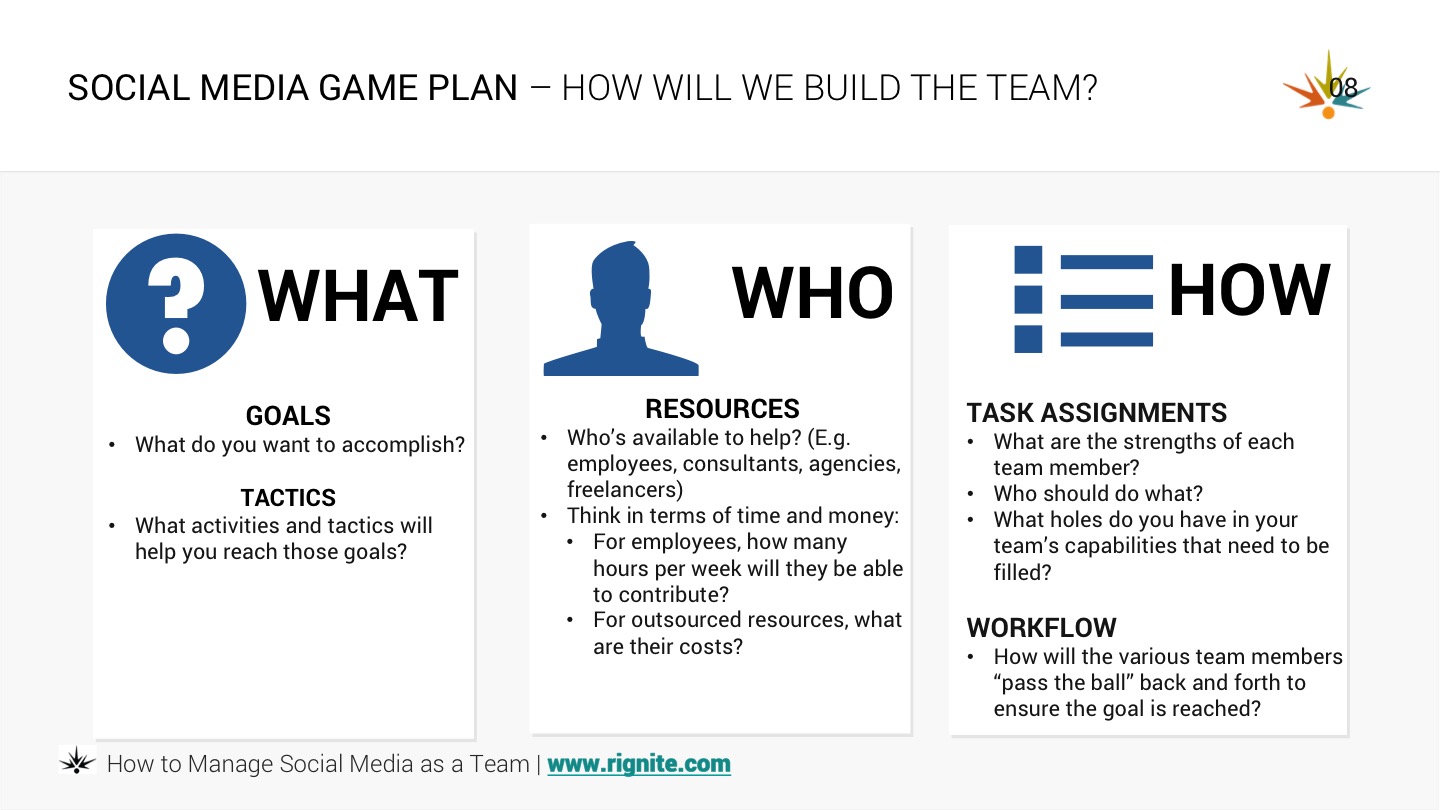
Start by thinking through these questions:
| What | Goals | · What do you want to accomplish? |
| Tactics | · What activities and tactics will help you reach those goals? | |
| Who | Resources | · Who’s available to help? (E.g. employees, consultants, agencies, freelancers). Think in terms of time and money: · For employees, how many hours per week will they be able to contribute? · For outsourced resources, what are their costs? |
| How | Task Assignments | · What are the strengths of each team member? · Who should do what? · What holes do you have in your team’s capabilities that need to be filled? |
| Workflow | · How will the various team members “pass the ball” back and forth to ensure the goal is reached? |
Tip: Having a social media strategy in place will make your “what” crystal clear. The foundation of a healthy strategy is the alignment of social media goals with high level business goals that are tied to improving each step of your funnel, with a focus on the stages of your funnel that are in most need of a boost.
So it helps to make sure your social media goals are tied into your business goals. If you can’t make the connection between your social media activities and business goals, you should question whether the activities are necessary.
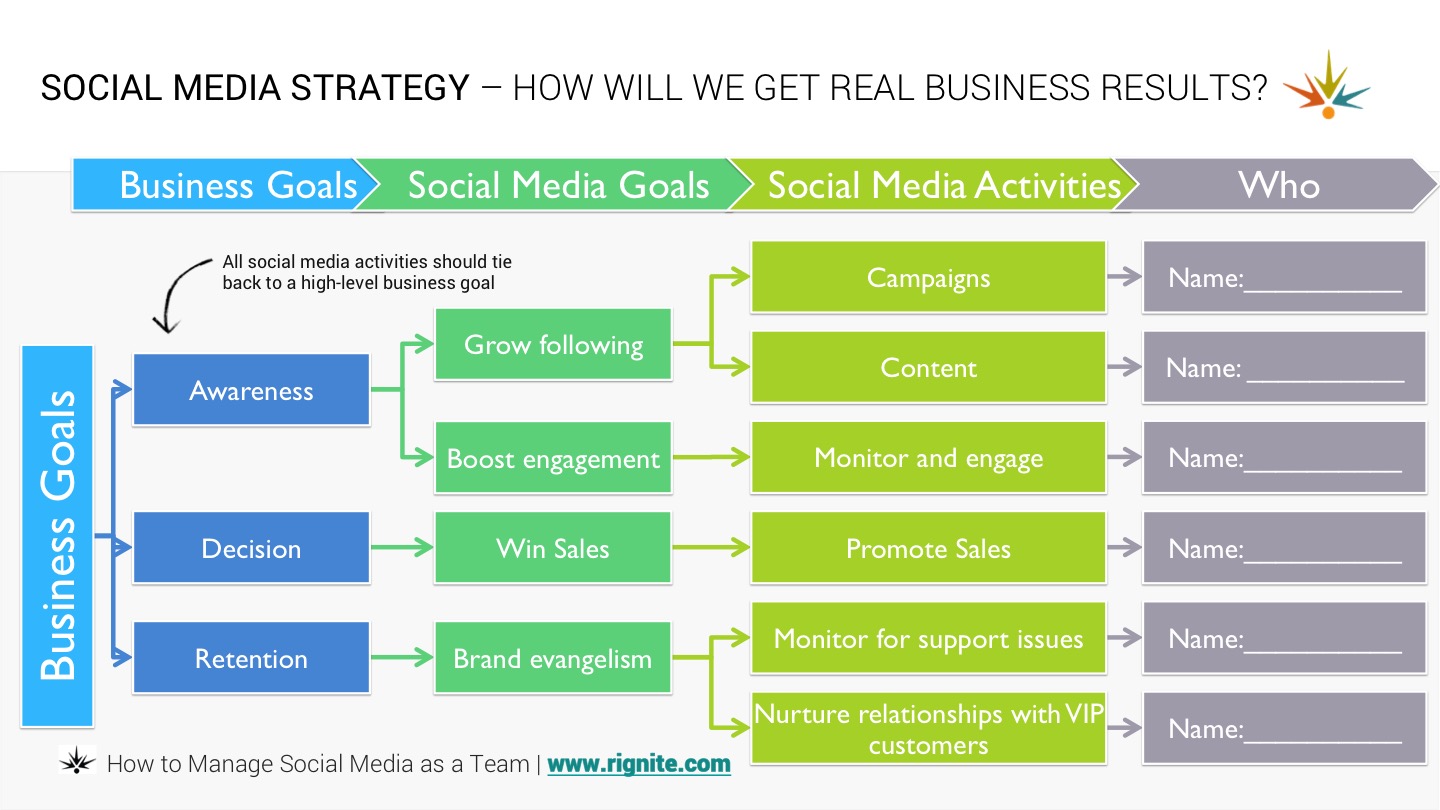
Think about where your social media goals fit into your sales funnel, if you have such a concept. Depending on the type of business you’re in, social media can play an important role at each stage in your sales funnel. But social media could also be more important at one or two stages such as awareness and engagement.
If you don’t have a sales funnel or if it’s not relevant, just think about what key steps your audience will go through in order to reach the ultimate goal. Is it a signup, visit, online response? What stages will your audience go through to get there? And what key ‘plays’ will your team need to run to move your audience toward the goal?
2Chapter 2: Delegating Social Media Roles and Responsibilities
Now that you know what killer plays your team is going to use to run circles around the competition, it’s time to name your MVPs (i.e. your social media team players).
The breakdown of social media team roles and responsibilities all depend on the unique skills and talents on your team.
Here’s an example of a few types of roles you’ll need to fill on your social media team. Keep in mind that you might have people on your team who cover more than one role each. You don’t necessarily need a different person for each role.
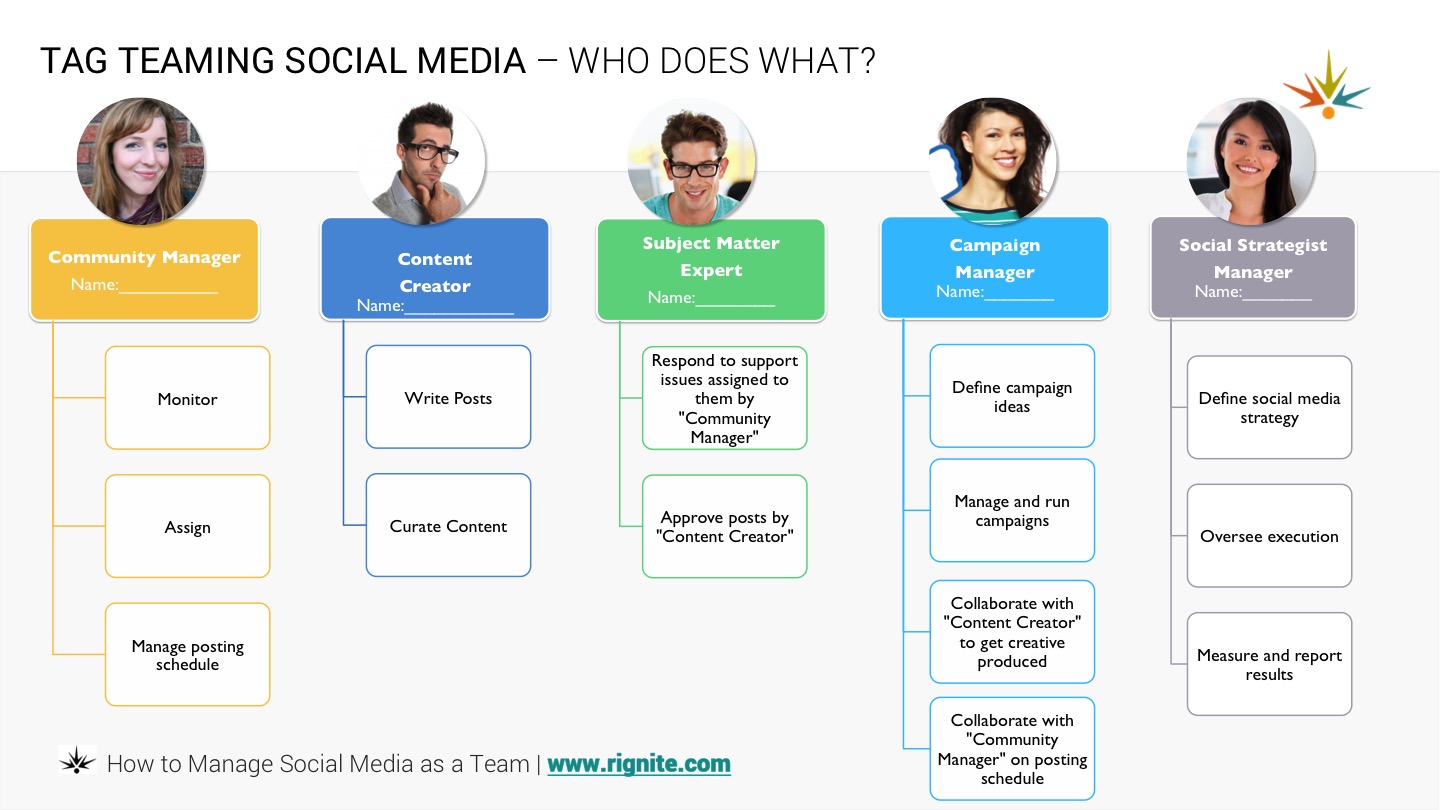
The key roles here are the Community Manager, Content Creator, Subject Matter Expert (SME), Campaign Manager, and Social Strategist Manager. Remember that one person can play more than one role on a smaller team.
Unless your business is a sole proprietorship, you’ll likely have different people for SME’s. For example, you’ll need to identify the expert for products, accounting, fulfillment, customer service, and marketing.
To determine which SME’s you need to identify it helps to review your social media and customer interactions over the past few weeks or months. Take a look at comments, complaints, questions, surveys, returns, phone calls, and emails so you can anticipate what you might see on social media. You’ll begin to realize all the possible SME’s you’ll need.
3Chapter 3: Creating Social Media Workflows
You know where the goal is (“the what”).
You know your players’ strengths (“the who”).
Now let’s talk about how they pass the ball and work together to reach the goal.
You’ll need to create your game plan for the social media ‘plays’ your team will most likely execute.
- Publishing content
- Curating content
- Running campaigns
- Monitoring and engaging on social media
While this list seems simple, there are quite a few tasks that go into getting the job done. And those tasks often need to be tag-teamed by different members of your team.
Check out these example social media workflows for each process. Here is a graphic workflow example for Publishing Content.
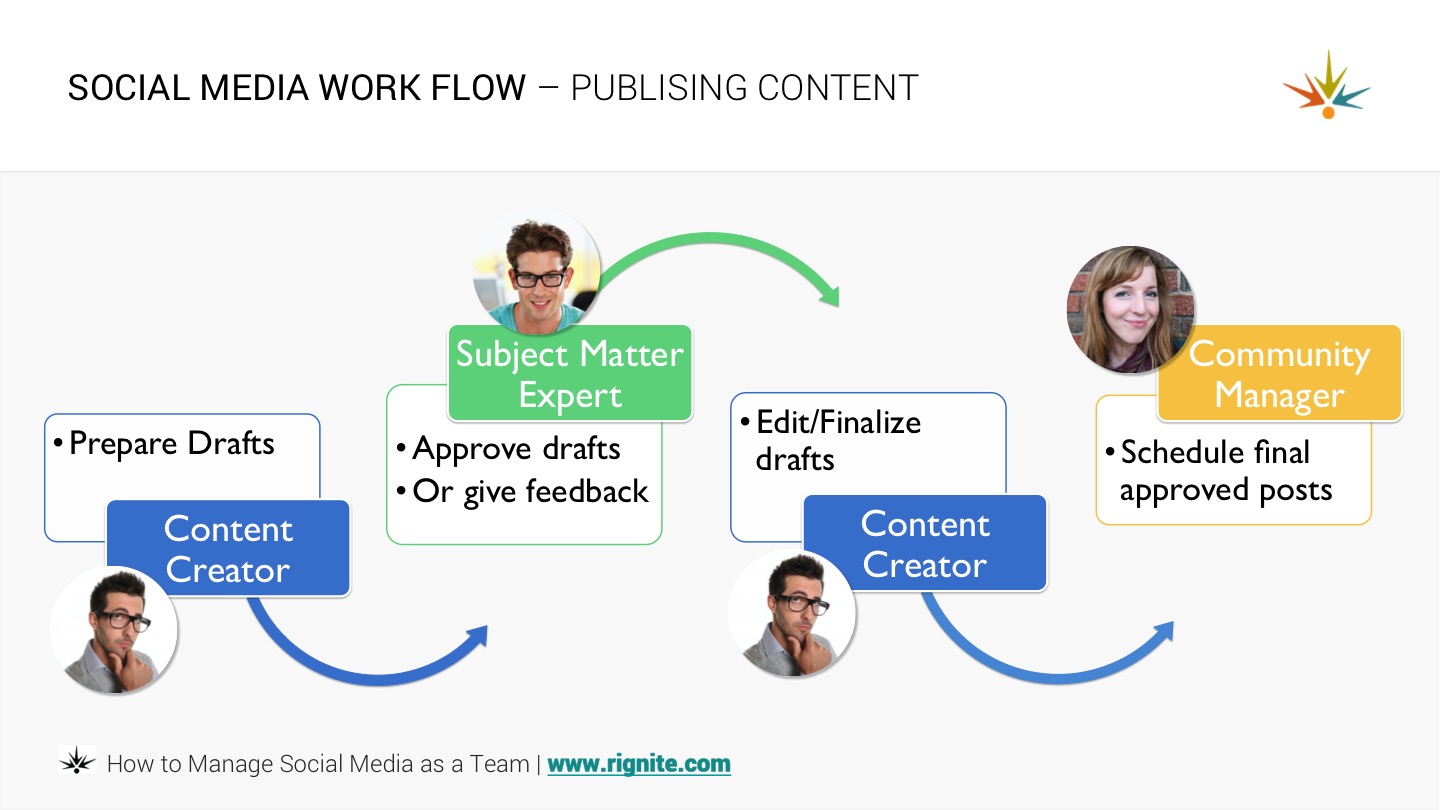
And here is one for Monitoring and Engaging. In many cases, the Community Manager may not be able to answer a question or respond to an inquiry or complaint. So it helps to know the work flow for getting to the right person for different types of situations.
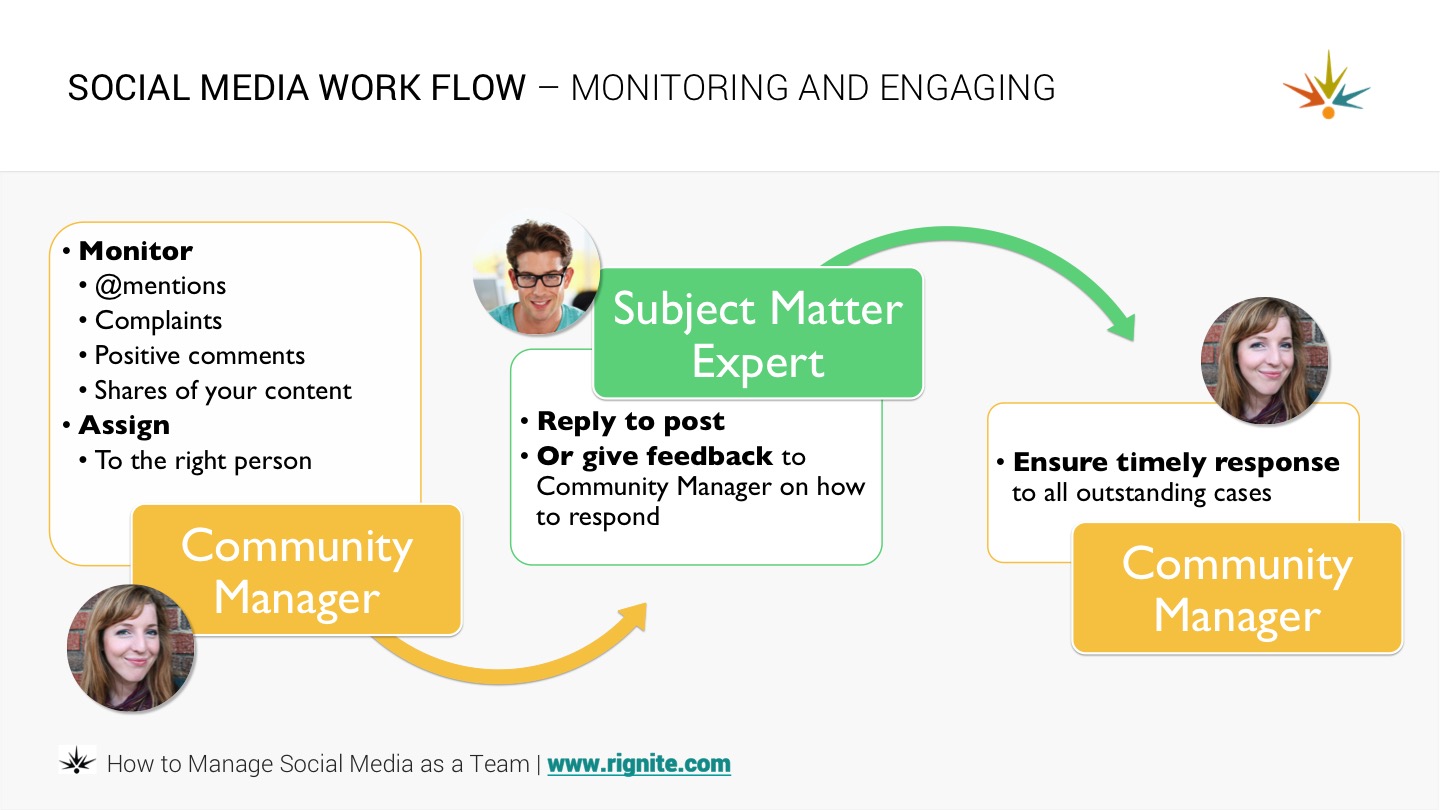
For example, you may have different Subject Matter Experts for product questions, shipping complaints, pricing, and job openings. It’s important for your community manager to know who to go to for each type of case.
4Chapter 4: Keeping the Lines of Communication Open
Because social media is a team sport, there’s a lot of bouncing the ball back and forth during the game.
It’s important that all players keep their eyes open for opportunities to carry the ball further toward the goal.
In addition to establishing clear roles and workflows, it’s also good practice to specify how your team will communicate during each hand-off. For example, will it be via email, chat, social case assignment, etc. It’ll vary depending on the ”play.”
We included example “passes” in the graphics shown in the section above, but here’s a bit more detailed play-by-play for a common scenario: monitoring and responding to social media posts.
Monitoring and Responding
Who will be monitoring each social network? And what will they be looking for? How will they communicate to others if posts need responses?
The communication process could be as simple as a screen shot of the post sent by email to the appropriate SME. But how will you track if the response has been sent?
Often, some type of tracking and follow up process is needed. Be sure to talk through these issues with your team so nothing falls through the cracks.
If you have a social media management platform that’s designed to help team collaboration it could make your life easier and improve the quality of your responses.
Here’s an example from Rignite for monitoring conversations and assigning a post to a team member for follow up.
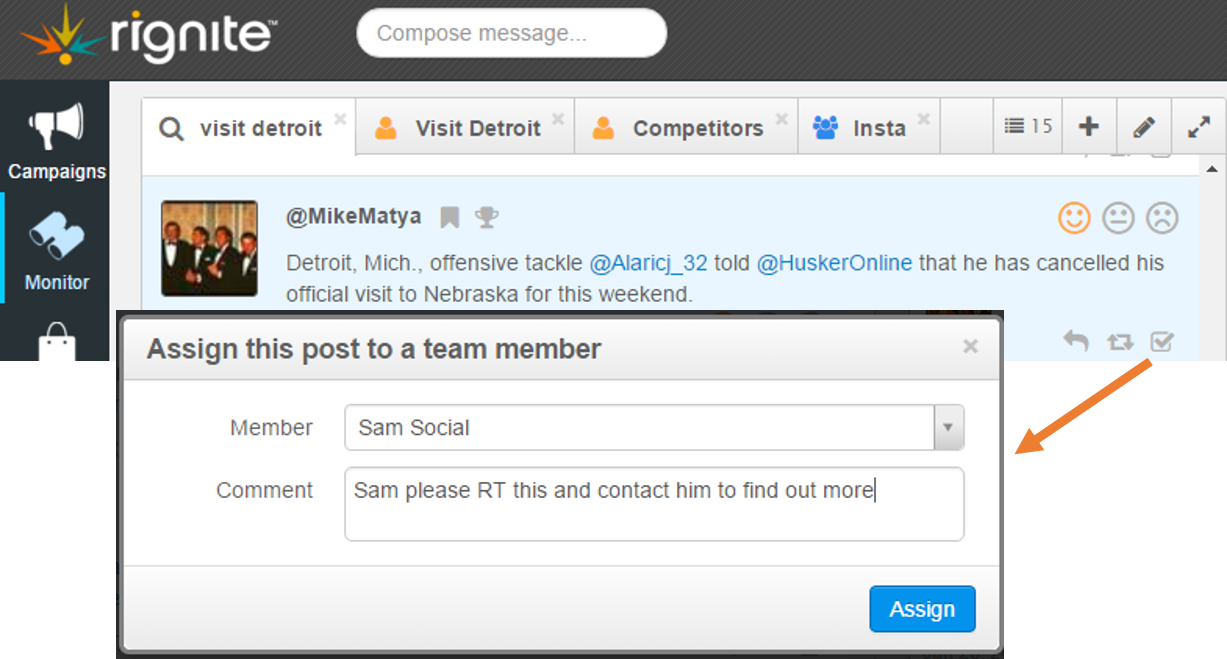
Sam gets an email notifying her that a case is assigned, and Rignite tracks the response and how long it took to respond.
Whether you manually handle responding and communication or use a tool, make sure your team doesn’t trip over each other or drop the ball on important plays.
- Try Managing Your Social Media Posts and Assignments As a Team with Rignite
Rignite helps you collaborate as a team to manage your social networks. Assign posts for follow up, track engagement, and schedule posts.
5Chapter 5: Keeping Score And Measuring Results
In sports every player is held accountable by their stats. How else would there be so many first’s, most’s, best’s, and only’s in the history of sports?
Those stats accomplish three things:
- Rewards players for their achievements
- Keeps them on track so they know which of their contributions are moving the team forward
- Let’s them know what areas they need to improve
You can set each member’s goals based on how their activities contribute to the game plan. Each member may have different metrics depending on which plays they run.
Community managers are often responsible for the overall post activity levels and response times, while content creators will be looking at engagement numbers.
For the team members involved with creating and publishing social media content, the ultimate metrics are around engagement and actions taken by your fans. These include clicks on links in posts, comments, replies, likes, and retweets. A typical high level analysis of activity for a given time period and social profile looks like:

It’s also useful to review which individual posts get the best engagement to see if that provides any clues for what works best, like below.
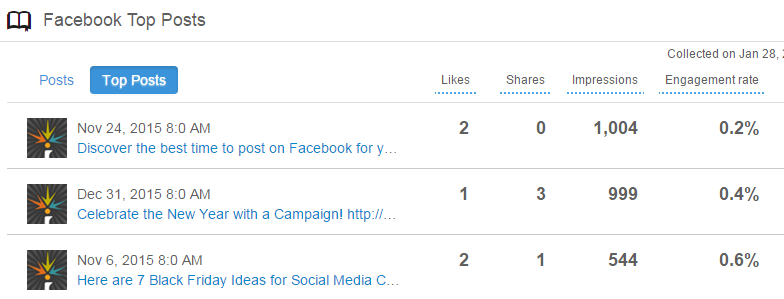
Marketing execs and content strategists should take a more strategic view of results. Comparing the series of posts for marketing campaigns, or by the category of posts will help determine if the strategy is paying off.
In the example below, the engagement for educational posts is 38% of the total engagement, while being on 28% of total posts. So educational posts clearly have higher engagement than other posts, like promotional posts.

For the community manager, customer service, and SME’s who respond to comments and inquiries it’s important to track response times and open/close rates for social cases, like below.
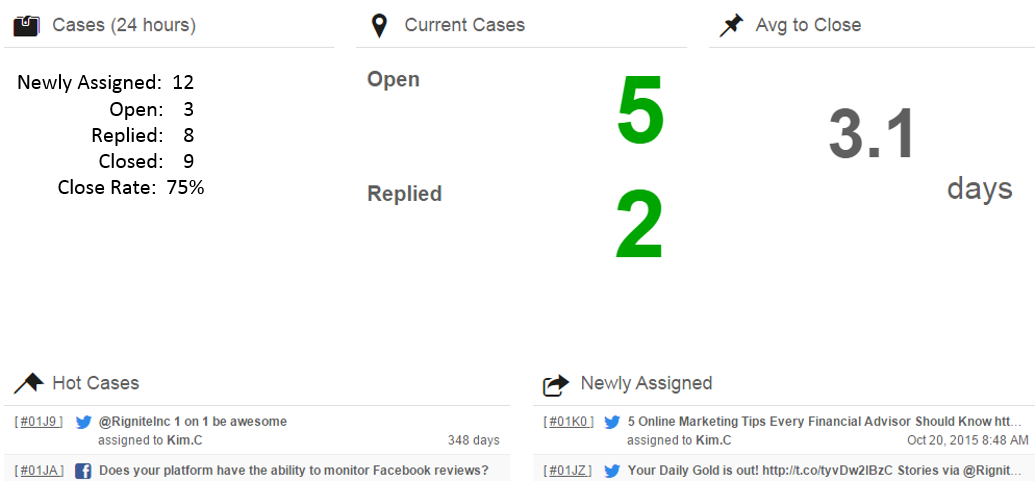
Measuring results in multiple ways and dimensions is important for effectively managing a social media team. It’s important to have metrics for internal and external activity, overall engagement by social network, results by campaigns, and tracking for different content categories.
Get Your Teamwork Started Today
Managing a social media team doesn’t have to be complicated or a burden, but it does make sense to take an organized, structured approach. This will make sure you activities are tied to overall goals. And ensure timely, consistent and quality social media engagement.
Manage Social Media as a Team with Rignite
Rignite is a software platform that makes it easy to manage your social media marketing activities and collaborate as a team.
-
Katie

